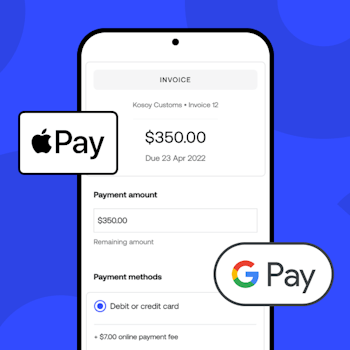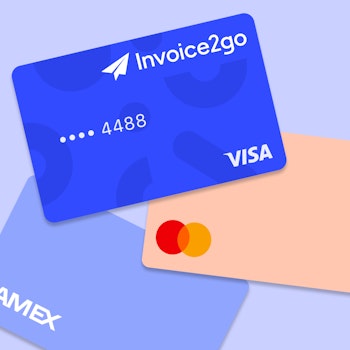
How to set up a retirement fund as an independent professional
If you’re employed full-time, your company likely offers easy ways to set you up for retirement. But how do you set up a retirement fund as an independent professional?
Truth be told, most freelancers and independent contractors don’t always think that far ahead—and this is especially true if you’ve just recently launched your own business. If that’s the case, you’re probably busy with a zillion other things, but the way time flies, your future will be here faster than you can imagine.
Saving for retirement can reduce your tax burden, help you build greater wealth, and bring you closer to financial freedom as time goes on. There is no time like the present, and it’s never too late to start.
How to set up retirement savings for self-employed professionals
It can be harder to plan for your long-term financial future when you work for yourself. But the sooner you get started, the better your benefits will be when the time comes.
Most funds have a contribution limit, meaning there are maximum amounts you can put into the account each year. Some are better for sole proprietors and independents, while others make more sense if you have employees.
This article will break down all the options so you can choose what works for you.
5 retirement savings options for self-employed professionalsThere are five basic choices for independent workers and small business owners. Let’s dive in and see what’s under the hood.
1. Solo 401(k)
Also known as Solo-k, Uni-k, or One-Participant k. If you’re an independent contractor, freelancer, or sole proprietor with no employees, the Solo 401(k) is a good choice for you.
The Solo 401(k) is essentially the same as other 401(k) plans and follows the same rules, except that you’re making both the employee and the employer contributions as a sole proprietor. As such, you will have to define contribution limits based on those roles.
The total contribution limit for the Solo 401(k) is $58,000 in 2021 and $61,000 in 2022. If you are over 50 years of age, you can also make a catch-up contribution of an additional $6,500.
For example, your contribution limits as an employee are $19,500 for 2021 and will be $20,500 in 2022. The catch-up amount applies if you’re over 50.
As the employer, you can contribute up to 25% of your net income—in other words, your gross income minus taxes and personal plan contributions. The maximum amount you can base this on is $290,000 for 2021, which goes up to $305,000 for 2022.
You’ve got some choices as far as taxes go. If you go the traditional route, your contributions reduce your income in the year you make them, and your retirement income will be taxed as ordinary income.
If you prefer a tax deferral in retirement, choose a Roth solo 401(k). In this scenario, you’d continue to pay taxes on the contribution amount, but your retirement funds would be tax-free. You’d be better to choose a Roth if you expect your income to be higher in retirement. If you suspect your income may decrease, you’re better off taking the tax break now.
Getting started with a Solo 401(k)
To establish your Solo 401(k), speak to your broker. You can also do this online. Have your employer number handy. Your employee contributions must be deposited by December 31st, but you have until your filing deadline to make the employer contributions.
2. IRA (traditional or Roth)
If you’re just leaving your job to go solo, you can roll your 401(k) into an IRA. It’s one of the simplest ways to get started with retirement savings for the self-employed. You can establish an IRA whether you have employees or not. The only caveat has to do with your income. If you’re single and earning over $140,000 annually, you can’t contribute to an IRA. If you’re married and filing jointly, the amount is $208,000 for 2021.
Contribution limits for IRAs are $6,000 for 2021, or $7,000 if you’re over 50.
The main difference between a traditional and a Roth IRA is how they are taxed. A traditional IRA reduces your taxable income in the year of contribution, and you’ll pay taxes on the disbursements in retirement. You’ll also be subject to a 10% penalty and taxes on early withdrawals.
With a Roth IRA, you pay taxes on the amounts you contribute, but your withdrawals in retirement are tax-free. There are no penalties for early withdrawal from a Roth.
Getting started with a Roth IRA
You can set up an IRA with your broker, through your insurance provider, your bank, or online.
3. SEP IRA
SEP IRA stands for simplified employee pension IRA. They’re often the best retirement savings for self-employed professionals and small business owners with no employees (or few employees). SEP IRAs are similar to a traditional IRA in that they are taxed on the amounts withdrawn in retirement. There is no Roth equivalent for this type of IRA.
Contribution limits are $58,000 for 2021 or 25% of net earnings (gross earnings minus taxes minus SEP contributions), whichever is less. The maximum amount you can base the percentage on is $290,000 in 2021, and there is no catch-up amount for over-50s.
SEP IRA pros and cons
The advantages of a SEP IRA are that there is little paperwork and no necessary reporting to the IRS. You can combine it with other types of IRAs; plus, you don’t have to contribute every year.
On the other hand, if you have employees whose plans you’re contributing to, it must be an equal percentage for each participating employee. In other words, it’s not a fund that you’d use to sock away money for your own retirement. If you contribute, the amount must be equal for all eligible employees.
Getting started with SEP IRA
You can set up a SEP IRA through your preferred broker or online. You’ll need to create a formal agreement using IRS form 5305-SEP and set up individual accounts for all participating employees. The employees can then self-manage their own funds.
4. SIMPLE IRA
If you have a larger business with many employees, a SIMPLE IRA is an option to consider. SIMPLE stands for Savings Incentive Match Plan for Employees, and it’s a way for you (as an employer) to contribute to the traditional IRAs you’ve already set up for your people. The advantage to having a SIMPLE IRA is that it’s easy to set up and doesn’t have the costs associated with operating a traditional retirement savings plan.
As an employer, you can’t have another retirement savings plan in effect. There are two ways to set it up. The first scenario is an elective contribution, meaning that your employee will have to opt-in and contribute up to 3% of their earnings, which you’ll match. If the employee chooses not to participate, you do not contribute. In the second scenario, you contribute 2% of their annual salary up to the annual limits, regardless of whether they choose to contribute or not.
The percentage is based on an annual limit of $290,000 in 2021, but that will go up to $305,000 in 2022. That translates to $13,500 in 2021, plus a potential catch-up amount of $3,000 if the employee is over 50. The combined maximum contribution is $19,500, including the employer amount.
SIMPLE IRA pros and cons
On the plus side, the amount you contribute is generally lower than other types of IRAs. There are no filing requirements, and the cost of your contribution can be written off as a business expense. Good stuff!
But… even though SIMPLE can be less costly—and therefore more attractive—it’s not always the best choice.
For example, a SIMPLE plan can add up quickly when you have many employees opting in. Plus, the penalties are pretty high for early withdrawal—up to 25% if it’s done within the first two years. You also can’t roll the account over into another retirement account during that time. SIMPLE also has more paperwork than other IRAs, so something to consider.
Getting started with SIMPLE IRA
To set up a SIMPLE IRA, fill out IRS Form 5305-SIMPLE if you are depositing contributions at a specific bank or financial institution. Use IRS Form 5304-SIMPLE if your employees are choosing their own bank for their account.
5. Defined benefit plan
If you’re a high-earning individual with no employees, a defined benefit plan might be the best option for maximum retirement savings.
A defined benefit plan is a type of pension plan. Unlike other retirement funds, it’s based on a set contribution and does not rely on market gains. If there is a market shortfall, it’s the employer’s responsibility to make up the difference with other funds. In the case of a defined benefit plan, however, you know exactly what the contribution and payout will be ahead of time.
When you retire, you’ll receive a guaranteed monthly income or, in some cases, a lump sum.
Defined benefit plan pros and cons
One of the best things about a defined benefit plan is that you can build up pretty substantial savings in a short period, even if you started late or plan to retire early.
You can contribute a lot more than you can with other retirement plans, and you can also combine the benefit with other retirement plans. The payout is not only predictable, but you can also choose to spread it out over time (such as with a monthly benefit) or take it in a lump sum on retirement. Since it’s based on a set contribution, you’ll know exactly how much you’ll get at payout time.
Taxes are deferred until you receive the benefit, at which point it will be taxed as income. Your contributions are tax-deductible up to a limit, which is generally decided by your enrolled actuary, a qualified individual that specializes in employee retirement income security.
On the downside, defined benefit plans are typically more costly and complicated to manage than IRAs or 401(k)s. It also requires a good deal more administrative work. Once the plan is established, you’ll pay excise taxes on shortfalls or excess payments. All in all, the setup costs are higher, and there’s more work involved. You’ll need to commit to the annual contribution amount, and if you need to change it, up or down, you’ll be on the hook for fees.
The employer is generally responsible for making most of the contributions in an employment situation. Employees sometimes contribute, either voluntarily or not. Your funding and associated costs will rise if you take on more employees.
Getting started with a defined benefit plan
Not all brokers offer defined benefit plans, so you’ll need to research your options. The administrative requirements can be challenging to manage yourself, so it’s a good idea to work with a brokerage experienced with this type of retirement planning.
Each year you’ll need to file IRS Form 5500 with a Schedule SB, which an enrolled actuary must sign.
Setting up your retirement plan as an independent professional
Now that you know the nitty-gritty of self-employment retirement plans, it’s time to sit down and decide what’s best for you.
· Are you a sole proprietor, freelancer, or independent professional? Or do you have employees?
· When do you want to retire? And how many years do you have to save for retirement?
· Are you a high-earner? Or are you just getting started?
· Do you prefer tax-deferred savings? Or would you like not to pay income tax later on?
And perhaps most importantly—what kind of life do you want to lead in retirement? Is there rest and relaxation in your future vision, or do you want to enjoy life to the fullest with every luxury there is?
These points are vital to consider. After all, it’s your future we’re talking about! Whether you’ve got another 30 years of work ahead of you or if you’re a late starter looking to maximize your potential, there’s a retirement plan for you.
Join our online small business community today for more actionable tips on finding success as an independent business owner.
Related Articles

How to accept credit card payments on Invoice2go in 3 simple steps

Accept payments online via Apple Pay and Google Pay

Must-not-miss write-offs as you wrap up 2022 year-end finances

5 ways accepting credit and debit card payments helps your business stay resilient

4 easy ways to increase cash flow today

What is Small Business Saturday and why is it important?
The features and surprising benefits of a well-designed packing slip
